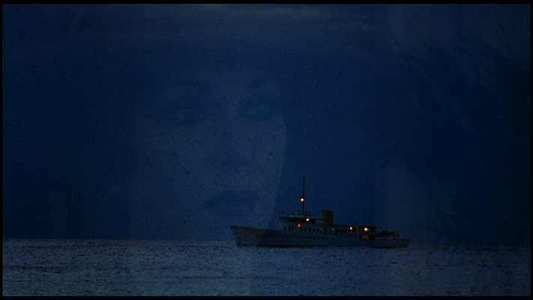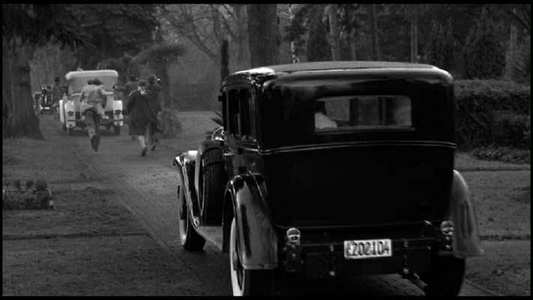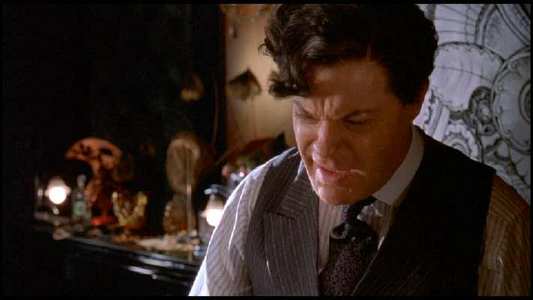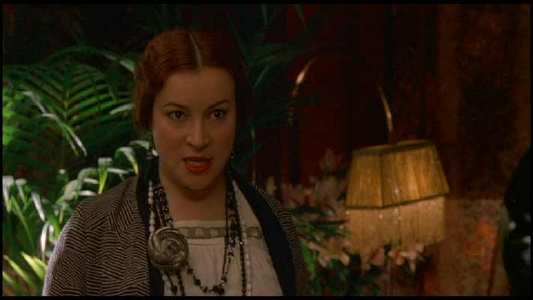Review of Cat`s Meow, The
Introduction
Peter Bogdanovich`s The Cat`s Meow is based on real events, but with a completely fictional twist. The screenplay by Steven Peros is based on his stage play of the story.
In November 1924, Thomas Ince, a Hollywood pioneer, died under mysterious circumstances following a party on the yacht of news magnate William Randolph Hearst (the model for Citizen Kane). Ince was a contemporary (possibly according to Halliwell an equal) of DW Griffith, and had innovated the idea of production-line filmmaking. In 1924, his star was no longer in the ascendent and he was trying to get Hearst`s backing in Hollywood as Hearst`s West Coast Production Executive (Hearst was at that time an East Coast tycoon.) Hearst had gathered a disparate group of friends for a party on his yacht the Oneida. Present on the yacht were Ince, Hearst, Hearst`s doctor and secretary, Hearst`s actress mistress Marion Davies, novelist Eleanor Glyn, rising journalist Louella Parsons, Charlie Chaplin and a sprinkling of other guests. After a party on board, the Oneida made an unscheduled port of call to San Diego, where Thomas Ince was transferred by private ambulance to his Hollywood home suffering from "indigestion", where he died two days later. Although he had been in perfect health (other than a peptic ulcer), Ince was cremated without any form of post mortem examination into the cause of death, and officials seemed to go out of their way to conclude the matter as quickly as possible. Rumours and innuendo surfaced in the Hollywood community immediately, but it was not until Hearst`s death in 1951 that credence started to be given to the story that Ince had received a fatal gunshot wound at the hands of Hearst, who had mistaken him for love-rival Charlie Chaplin.
At the centre of the affair was Marion Davies (played here by a pre-Spiderman Kirsten Dunst). Davies was a capable actress in silent film who wanted to make comedies but Hearst, her sugar-daddy, wanted bigger things for her. The movie takes the line that she was being chased by a womanising Charlie Chaplin (a quite stunning performance by Eddie Izzard, showing he is a fine actor given the right material). Ince (Cary Elwes) was trying to ingratiate himself with Hearst (another stunning performance, this by Edward Herrmann) by self-appointment as Marion`s producer-cum-minder. This leads to tragedy, although the true train of events may have been that the insanely jealous Hearst shot Ince believing him to also be involved with Marion rather than, as in the film, he was mistaken for Chaplin.
The narrative is provided by the novelist Eleanor Glyn (Joanna Lumley in a henna-ed wig). Supporting characters include James Laurenson as Hearst`s doctor, who helped cover up the events, and Ronan Vibert as Hearst`s secretary-right-hand-man and fixer. Louella Parsons is played to gauche perfection by Jennifer Tilly (at least until she has Hearst where she wants him and the steel of the woman who would be Hollywood`s Gossip Queen comes to the surface).
The whole affair is played out in a style a number of critics have dubbed reminiscent of the all-star Agatha Christie adaptations of the 1970s and 80s. Well, I suspect that arch manner was how the rich and famous behaved in the mid 1920s - the era of Bertie Wooster, Hercule Poirot and dancing the Black Bottom. Yes, everybody prides themselves on witticism, everybody dresses up even to go to bed and murder is a rather picturesque affair. In this case, however, the characters don`t gather in the lounge to hear the detective unmask the killer. The killer collects them together in the dining room to swear them all to secrecy that nothing happened on the yacht the previous night.
And therein lies another extraordinary piece of acting - Edward Herrmann as William Randolph Hearst is an amazing turn, one moment charming and avuncular the next moment consumed with jealous rage. One moment you`re scared of him as he trashes Marion`s bedroom and sets out looking for her and Chaplin. Then you`re sympathetic as he comes apart at the seams over the enormity of what he has done. Seconds later you`re appalled at his sheer callousness as he engineers Ince`s removal from the ship, his machinations telling Ince`s soon-to-be-widow his version of events over the ship-to-shore phone, and finally his bribery of the potential witnesses including Louella Parsons who actually saw him shoot Ince.
Before you start thinking this kind of thing could never happen, remember that Hollywood in the 1920s and 30s was when the Studio system was at its most desperately powerful. People like Hearst were near to being Bond villains for sheer untouchability. This was a time when people like Henry Ford could get the armed militia out to fire on striking workers or people could just be "disappeared" over the Mexico border (as one starlet found out to her cost when she tried to blackmail DeMille.)

Video
A quite immaculate 1.85:1 anamorphic widescreen transfer. The movie was shot on location in Greece with studio work done in Berlin. Both exterior and interior scenes are rendered beautifully with the frequently dark interiors of the yacht still revealing the production`s eye for intricate detail.

Audio
The movie features a pleasingly immersive Dolby Digital 5.1 soundtrack. Bogdanovich has avoided the use of a conventional score, punctuating the movie with tunes and performances contemporary to the era and fed into the mix either as on-screen performances or incidental music sources such as a radio playing in the back of a scene.

Features
There are all the usual suspects in the shape of a fifteen minute "making of" puff piece, a more in-depth documentary by the Sundance Channel from their "anatomy of a scene" strand, and a theatrical trailer. Where the film departs from the normal is the inclusion of a genuine Chaplin two-reeler called "behind the screen" which is partnered by a series of clips of silent actress Claire Winsor, who was present aboard the yacht at the time of Ince`s death.
Peter Bogdanovich provides a slightly dry but nonetheless informative director`s commentary, which contrasts with the somewhat peculiar cast commentary provided by Eddie Izzard, Joanna Lumley and Ronan Vibert. This gives every impression of being recorded on the spur of the moment as the sound is slightly echoey, there is a good deal of ambient noise such as the air conditioning and the trio being served coffee. At one point Lummers wanders off to the bog and Izzard and Vibert talk about her. They have so much fun they overshoot the end of the titles.

Conclusion
Eddie Izzard proves his acting mettle in this interpretation of a famous 1920s scandal. Was Thomas Ince murdered by William Randolph Hearst in a jealous fit of rage or did he really die of complications from a peptic ulcer? The movie gives you no great insight into this Hollywood legend, but if you like the brittle manners of an era gone by, you`ll have a ball.
Your Opinions and Comments
Be the first to post a comment!